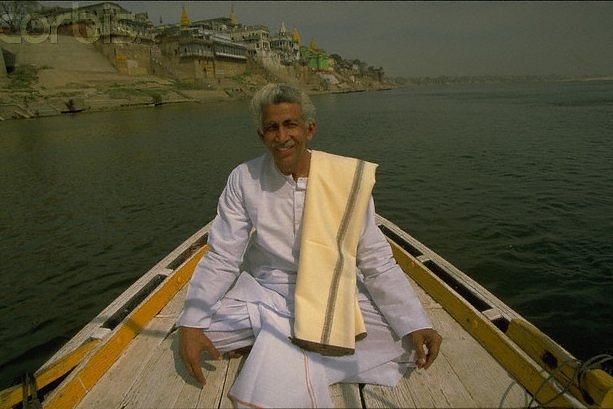
Why We Should Remember Prof Veer Bhadra Mishra Today
Swarajya remembers Prof Veer Bhadra Mishra, winner of several titles and awards, for his service to the holy river and ecology.
Today is the 76th birth anniversary of a great champion of the Ganga, Professor Veer Bhadra Mishra. On this occassion, Swarajya pays a humble tribute to the man. In 1999, Time (magazine) named seven people from across the globe as “Heroes of the Planet”. One of the seven was the former head-of-department of civil engineering at the Benares Hindu University (BHU), Professor Veer Bhadra Mishra. Mahantji, as he was called, had also been on the UN’s Global Roll of Honour in 1992. He was conferred with these two titles and many awards through his life, for his singular efforts to clean up the Ganga.
Arguably, no other person has done as much for the cause of that great river as the late professor. Towards this end, he established the Sankat Mochan Foundation, which did unparalleled work for clearing the river of pollutants, especially in and around Varanasi. Under him, the foundation developed and implemented an effective mechanism for this purpose.
The process relied on natural processes and gravity, ensuring minimal usage of electricity. This one mechanism alone won him recognition and respect within India and also outside it. Needless to add, he applied his training and career in science to a most noble cause here.
The first in his family to make a living out of academics, Prof Mishra specialised in hydraulic engineering and water resource management. In all, his teaching career spanned almost 40 years.
When one looks at Prof Mishra’s great efforts for Ganga’s cause, and his indefatigable will behind it, one realises this was brought about by an integration of scientific training and his complete devotion to the Ganga. Indeed, he always referred to it as Gangaji, the suffix symbolising his total and lifelong commitment to it. In fact, even when in ’99 Time named him as a ‘hero of the planet’, he chose to celebrate the occasion as a milestone for the river rather than himself, saying “In honouring me, they reminded the world that cleaning the Ganga is a global concern”. It was only appropriate then that through the course of his life, he earned the title of Ganga Putra (Son of Ganga).
However, to those aware of the other aspect of Prof Mishra’s life, his devotion towards that river should not come as a surprise for this other facet was closely related to the feeling of devotion. Prof Mishra was the mahant, head of arguably one of the most important temples of north Indian Vaishnavism — Sankat Mochan in Varanasi. Hence, Mahantji.
Prof Mishra inherited the position at a young age of 14 after the demise of his father. In his role as the mahant, he ensured the preservation and continuation of many centuries-old traditions associated with the temple. Under him, the annual temple festival, held in April every year, attracted the greatest artistes of the time. At a personal level, Prof Mishra devoted a couple of hours every day to reading of the works of Tulsidas till his last days. While he was an authority on Tulsidas and read him every day religiously, there was another link between the two. The saffron figure of Hanuman at Sankat Mochan is believed to have been established by the creator of Ramcharitmanas himself. It is to this that the temple owes its massive popularity. In his life, Prof Mishra remained loyal to all three icons — the deity, the temple, and its progenitor.
That, however, does not imply that he was bound by, or slave to, traditions. When an electric crematorium was proposed in Varanasi, Prof Mishra gave his unequivocal and unqualified support for it. One of the problems for the Ganga there was that half-burnt corpses used to be discarded in the river. An electric crematorium was proposed as the solution to this. However, there was also the fear that it would be opposed by the orthodoxy of the city. Prof Mishra used his authority as the mahant to garner support for it. His argument was that Hinduism has always been open to new ideas and practices, and it will be as welcoming to this one.
The professor-priest breathed his last on 13 March 2013 in Varanasi. At a time when cleaning of the Ganga has become a national agenda, we could do well to take inspiration from the man who did more for the cause than anybody else.
This piece would not have been possible without inputs from Professor S.N Upadhyay, former director IIT-BHU and a colleague of Prof Mishra’s.